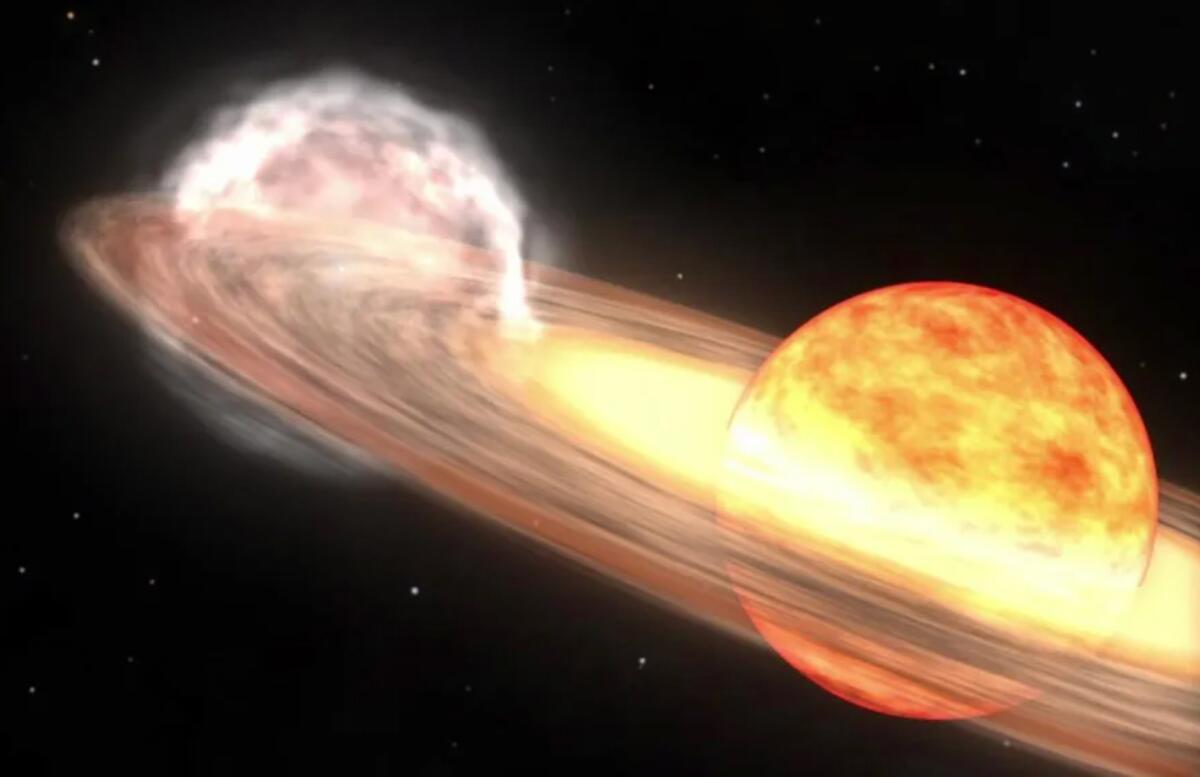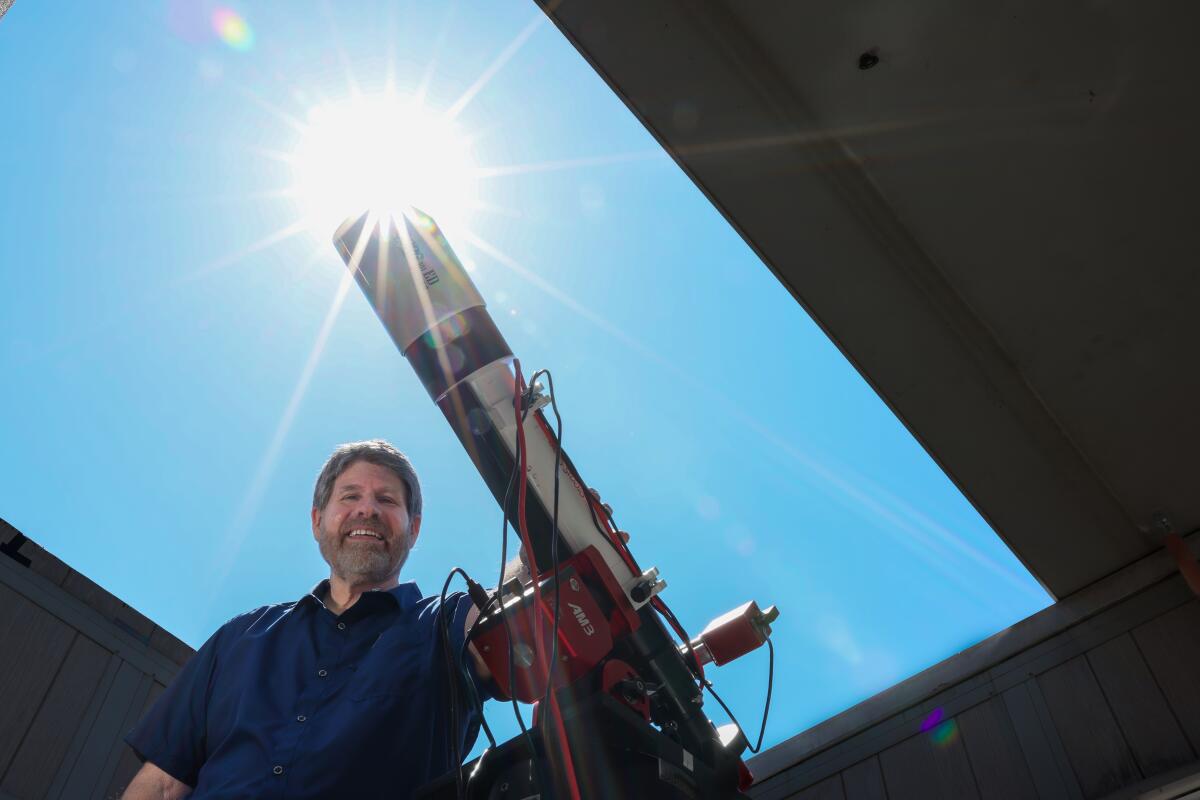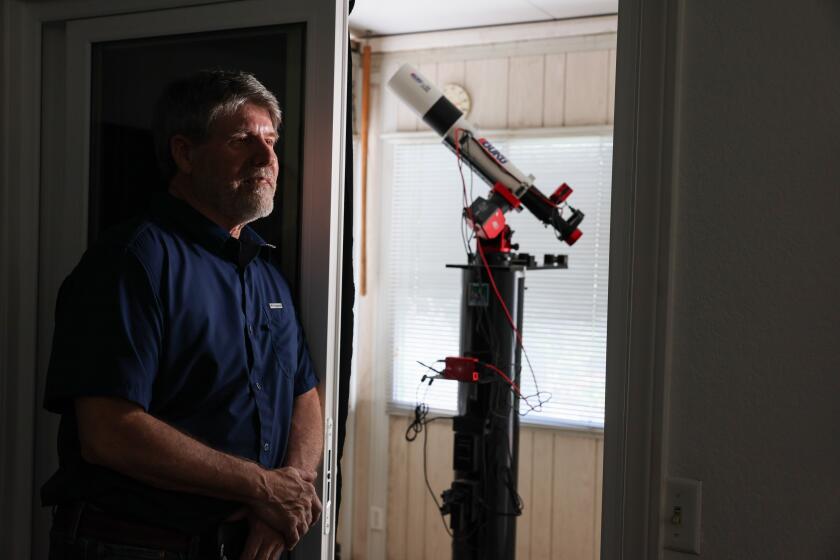A star is about to explode. Here’s how to watch it

- Share via
Astronomers around the world are preparing for one of the most anticipated cosmic firework shows of the year — but you don’t need a fancy telescope to join in on the festivities.
The hydrogen that a small, dense star has spent the past 80 years siphoning off of its nearby neighbor is about to explode like a thermonuclear bomb a hundred thousand times the brightness of the sun.
From Earth, it’ll be about as bright as the North Star, making it visible to the naked eye — even with Los Angeles’ light pollution.
Countless amateur astronomers and observatories around the world — and in space — are planning to watch the explosion, called a nova. Here’s everything you need to know to join in on the fun:
With a rare star explosion expected any day now, astrophysicists are relying on a community of hobbyists with backyard telescopes to tell them when it erupts.
To get the word when the star goes nova, you can follow NASA Universe on X, formerly known as Twitter. For hardcore enthusiasts that want to know as soon as the astronomers do, you can sign up for novae instant email notices from the Astronomer’s Telegram.
Scientists expect it to happen any time between now and the end of the year, likely before the end of August. (The nova technically occurred some 3,000 years ago, but the light is just now reaching Earth.)

Once the star, nicknamed the “Blaze star,” goes nova, you have just two or three days in Los Angeles — or about a week out in the desert — to hope for clear weather and try to spot it. The star will be at its brightest the very first night after it explodes.
To spot the star the old-school way, first locate the Big Dipper. Then, follow the direction its handle points (before it curves down) until you find a group of stars in a tight “U” shape. This is Corona Borealis, the constellation the Blaze star is located in. The nova will be just outside the “U” on the bottom left.
Or, you can use websites and apps like Stellarium to spot it in the sky. Just input your location, and select the Blaze star. (It’ll likely be listed under its formal name T Coronae Borealis, or T CrB for short).
If you want to make a night out of it, Griffith Observatory hopes to give the public a view — they just need it to get dark early enough that the stars come out before they close at 10 p.m.
If the nova holds out for a while longer, they’ll bring out their lawn telescopes in addition to the 12-inch Zeiss telescope on the roof of the observatory that’s open to the public. Both options are free, and lines close for the telescopes at 9:30 p.m. Griffith staff will be at the ready to help visitors spot it.
One last thing you can do to prepare: practice now. Look at maps showing where the Blaze star is in relation to the Corona Borealis constellation, and try spotting the constellation in the night sky before the big day. It’ll not only help you spot the star faster, but give you an appreciation for how the nova changes the night sky.








